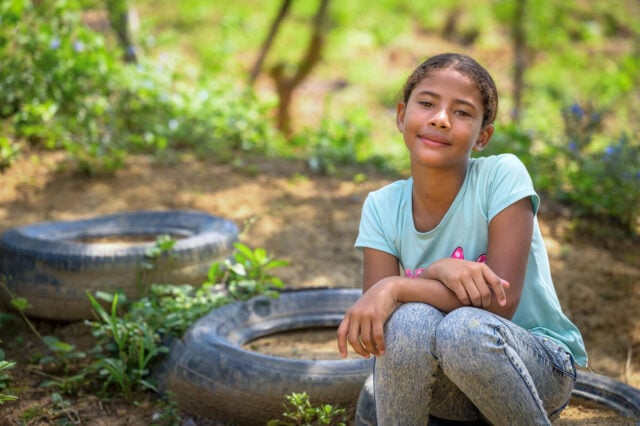A dire humanitarian crisis continues to unfold in northern Ethiopia, driven by ongoing challenges such as drought-like conditions, armed conflict, hunger, and escalating food insecurity. Despite the signing of a peace agreement in 2022, intended to resolve the conflict in Tigray, the surge in humanitarian needs persist across multiple areas, including the Afar and Amhara regions.
Northern Ethiopia crisis: Facts, FAQs, and how to help
Explore facts and frequently asked questions about the northern Ethiopian crisis, and learn how to help affected families.
- Fast facts: Northern Ethiopia crisis
- What’s happening in northern Ethiopia?
- How is the northern Ethiopia crisis affecting children?
- What is World Vision doing to help people affected in northern Ethiopia?
- What is the impact of World Vision’s programming in the country of Ethiopia?
- How can I help people impacted by the crisis in northern Ethiopia?
Fast facts: Northern Ethiopia crisis
- An estimated 9.4 million people across the region need of food assistance due to the impacts of conflict, according to the World Food Programme (WFP).
- Armed hostilities erupted in November 2020, disrupting harvest preparations and displacing people across the Tigray, Afar, and Amhara regions.
- Drought-like conditions and conflict have impacted over 5 million people in Amhara and Tigray.
- Disease outbreaks are increasing, including cholera, malaria, and measles, in both northern Ethiopia and across the country.

What’s happening in northern Ethiopia?
The conflict in Ethiopia’s Tigray region, starting in November 2020, has claimed thousands of lives. Despite a peace agreement in Tigray in 2022, a severe humanitarian crisis persists in northern Ethiopia due to drought, ongoing hostilities, widespread hunger, and escalating food insecurity. Humanitarian needs continue to rise.
Before the onset of violent clashes in Tigray, the northern region of Ethiopia had struggled with severe poverty. Even during periods of favorable harvests, hundreds of thousands of people relied on food assistance.
The ongoing hostilities have continued to drive displacement, damage to schools, and severely limited access to health and nutrition services. Only 3% of health facilities in Tigray are functioning adequately, severely hampering the region’s ability to meet people’s health needs. High rates of malnutrition persist, further exacerbating food insecurity among children and families.
How is the northern Ethiopia crisis affecting children?
The crisis in northern Ethiopia has exposed children to threats of hunger, illness, and violence. Children continuously face malnutrition due to limited access to food and proper nutrition.
The presence of unexploded ordnance and abandoned ammunition poses severe risks of injury and death to children and communities in northern Ethiopia. Hundreds of thousands of people displaced from the conflict are trying to return to their communities, where there’s minimal or no support for livelihoods, straining humanitarian aid efforts.
The conflict has inflicted severe damage on basic services and infrastructure, especially in the education and health sectors, impacting vulnerable children. As of October 2023, across Ethiopia, 7.6 million children — more than the entire populations of Los Angeles, Philadelphia, and Phoenix combined — are out of school and missing essential learning opportunities, according to UNICEF.
What is World Vision doing to help people affected in northern Ethiopia?
When the conflict in Tigray began in November 2020, World Vision was one of the first nongovernmental organizations to respond with need assessments and aid delivery in the conflict-affected region.
Our teams in Ethiopia coordinated with other humanitarian organizations to provide displaced families with food, emergency shelter, and non-food items, access to clean water, and sanitation and hygiene facilities. We partnered with healthcare facilities to ensure families had the necessary supplies and provided support to rehabilitate damaged schools so children could access quality education in safe environments. As of October 2023, we reached over 7.2 million people — more than 5.4 million women and children — through our emergency response. Our assistance included emergency food aid, access to clean water, cash assistance, emergency shelter kits, child protection services, and mental health resources.
Leteberhan, a 45-year-old mother, expressed gratitude for being able to use the cash to buy food to nourish her five children. “Thank you very much for providing us with this cash support,” she says. “I will buy some foodstuff from the market to feed my children.”
What is the impact of World Vision’s programming in the country of Ethiopia?
For more than two decades, World Vision has served the most vulnerable communities in the northern region and across Ethiopia. Through the generosity of our sponsors and donors and funding from foundations and governments, we came alongside over 7.6 million people in Ethiopia in 2022 through a wide range of programs that supported community improvement and development. These programs included increasing access to clean water, hygiene, and sanitation, supporting livelihoods and nutrition, protecting children, offering education and life skills, and investing in long-term community-wide solutions to poverty through child sponsorship. In 2022, nearly 260,000 community members in Ethiopia were supported through community engagement and sponsorship.




